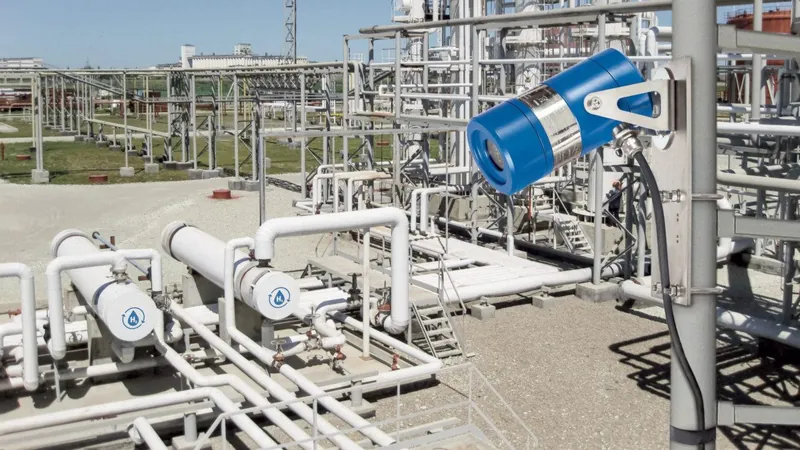
Unmasking the Hidden Dangers of Hydrogen: Ensuring Safety in a Green Future
2025-07-03
Author: Ming
The Green Promise of Hydrogen: Opportunities and Risks
Hydrogen is hailed as the future of clean energy—an eco-friendly alternative to traditional fuels. However, this versatile powerhouse comes with a unique set of safety challenges that demand our attention. According to insights from Dräger, a leader in industrial safety and gas detection, while hydrogen offers incredible potential for storing, transporting, and distributing energy, the risks associated with it can't be ignored.
Why Hydrogen Isn't Just Another Gas
Often compared to natural gas, hydrogen shares some explosive characteristics with methane, but it also presents its own unique hazards. Despite a historical stigma stemming from disasters like the Hindenburg, many in the industry remain unaware of hydrogen's specific risks. Operators transitioning from natural gas or LPG must familiarize themselves with these challenges and implement robust safety measures.
The Invisible Threat: What You Can’t See Can Hurt You
One of hydrogen's most alarming traits is its nearly invisible flame, which is difficult to detect in daylight. Moreover, it emits minimal heat, making it undetectable until you’re alarmingly close. Fortunately, specialized gas detection systems can identify the unique electromagnetic radiation that occurs during combustion, safeguarding worksites against potential disasters.
Crucial Risk Factors and Strategies to Mitigate Them
Hydrogen's flammability and propensity to escape from storage systems elevate the importance of reliable leak detection and integrity in storage solutions. For organizations venturing into the hydrogen economy, a detailed risk assessment—pre-emptively conducted by safety experts—becomes crucial to customize safety strategies.
Visualizing Risks: Advanced Mapping Technologies
Dräger provides advanced tools such as fire and gas mapping, producing a detailed 3D color-coded representation of hazards across a site. This visual aids operators in understanding potential leak paths and explosion risks, enabling swift action in emergencies.
Three-Tiered Defense Against Hydrogen Risks
Safety systems should encompass a multi-layered approach. Point detectors form the backbone of gas detection, strategically placed to catch accumulating gases. However, newer technologies, like ultrasonic detectors, can detect hydrogen leaks from a distance, crucial for preventing catastrophic incidents.
State-of-the-Art Detection: The 3IR Technology
Dräger's state-of-the-art 3IR detector incorporates three infrared sensors, allowing for precise identification of hydrogen flames while minimizing false alarms. This technology has demonstrated superior coverage capabilities compared to traditional detectors, marking a significant advancement in fire safety.
Integrating Systems for Comprehensive Safety Solutions
Effective hydrogen management goes beyond detection; integrating alarms and automated shutdown systems enhances safety protocols during potential hazards. Dräger's end-to-end service offers seamless integration of third-party products, cementing a holistic safety infrastructure.
Embracing Hydrogen with Confidence
As industries transition towards hydrogen, understanding and managing its associated risks is essential. With the right technologies and practices in place, this promising energy source can be harnessed safely, paving the way for a greener future. The message is clear: with awareness and preparedness, hydrogen can be as standard a fuel as any other.



 Brasil (PT)
Brasil (PT)
 Canada (EN)
Canada (EN)
 Chile (ES)
Chile (ES)
 Česko (CS)
Česko (CS)
 대한민국 (KO)
대한민국 (KO)
 España (ES)
España (ES)
 France (FR)
France (FR)
 Hong Kong (EN)
Hong Kong (EN)
 Italia (IT)
Italia (IT)
 日本 (JA)
日本 (JA)
 Magyarország (HU)
Magyarország (HU)
 Norge (NO)
Norge (NO)
 Polska (PL)
Polska (PL)
 Schweiz (DE)
Schweiz (DE)
 Singapore (EN)
Singapore (EN)
 Sverige (SV)
Sverige (SV)
 Suomi (FI)
Suomi (FI)
 Türkiye (TR)
Türkiye (TR)
 الإمارات العربية المتحدة (AR)
الإمارات العربية المتحدة (AR)